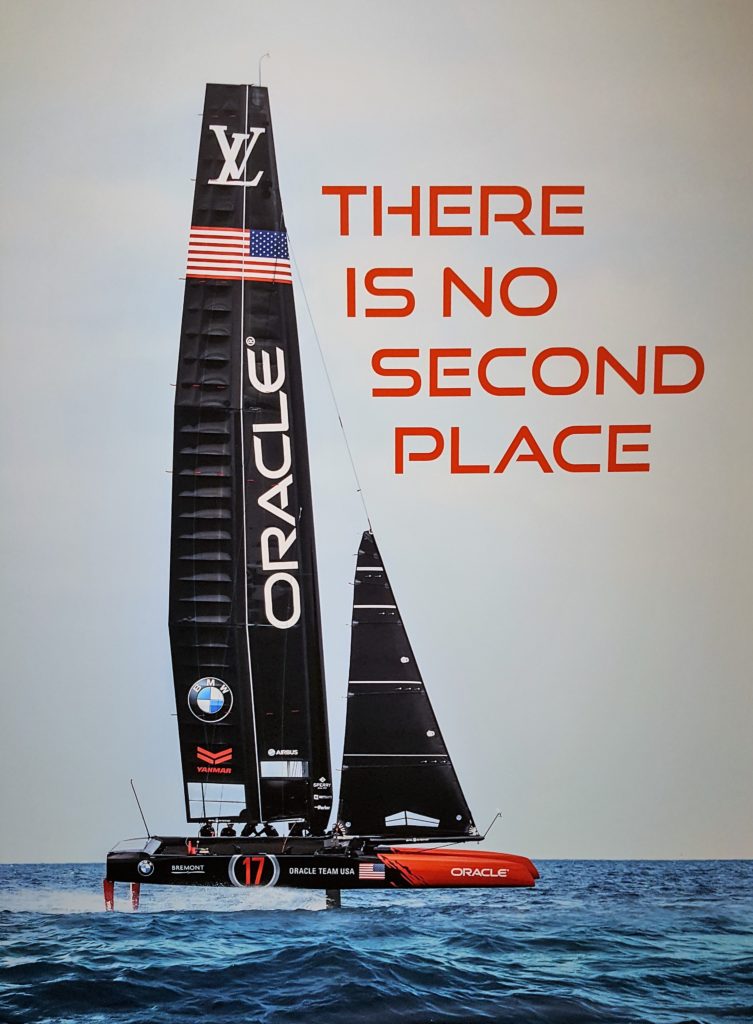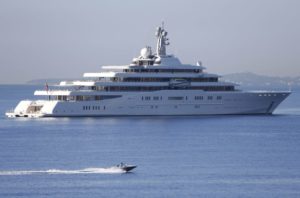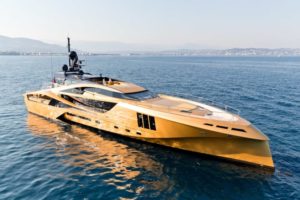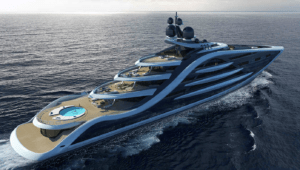
Can super-yachts handle very rough seas?
By Ron Larson, Encinitas CA
I’ve never been on a super yacht in rough seas. However, I would say no. I would not want to risk my life on one in a major storm. I suspect that they would be fine, to a tipping point, then all hell would break loose.

Here is what I don’t like about the average super yacht that I’ve seen.
-
Windows along the hull. Windows are just holes in your hull that are plugged by glass/plastic. You want to minimize the holes in your hull because every hole is a potential source of leaking. They have large windows close to the water line. To my eye, those are just waiting for a large wave or debris to break it and let water flood in.
-
Large windows above the deck. Normally, these window would never have a wave hit them. However, it can happen. I wouldn’t trust them to stand up to beating. I would insist that they have storm covers available on board to protect them.
-
 Interior objects not stationary. They decorate these things like mansions. Lots of loose things are sitting around waiting to become missiles when the boat lurches about. What if one of these things hits one of those big windows?
Interior objects not stationary. They decorate these things like mansions. Lots of loose things are sitting around waiting to become missiles when the boat lurches about. What if one of these things hits one of those big windows? -
Flat transom. They like to put big flat transoms on these things for lots of entertainment space. The problem with a transom like that in a following sea is that it can catch a wave and plow you into the wave in front. Give me a double ended any day that will split the following wave to the sides.
-
High Super Structure. A sailboat can always reef the sails, but you can’t reduce your windage on a super structure. In high winds, that acts like a sail, pushing you all over the place.
 Before Steve Jobs died, he commissioned a super yacht for his family. Being Steve Jobs, he couldn’t let the naval architects do their job. He had to tweak it. His boat ended up with lots of custom seamless glass. I pictured a “slide to unlock” hatchways being installed. I remember thinking, “God help him and his family if they take that boat out in the real water.” The sea is an unforgiving mistress. His aesthetic tweaks may have introduced vulnerabilities that can kill people. He didn’t understand mega-yachts at sea.
Before Steve Jobs died, he commissioned a super yacht for his family. Being Steve Jobs, he couldn’t let the naval architects do their job. He had to tweak it. His boat ended up with lots of custom seamless glass. I pictured a “slide to unlock” hatchways being installed. I remember thinking, “God help him and his family if they take that boat out in the real water.” The sea is an unforgiving mistress. His aesthetic tweaks may have introduced vulnerabilities that can kill people. He didn’t understand mega-yachts at sea.
Having said all that, if I was rich enough to buy a yacht, I would chose one of the Nordhaven models.
— Reprinted from Quora Digest
This provocative article from Quora Digest highlights some key differences between yachts and sailboats. It would be a stretch to take the Oracle out in the ocean in a big storm since it’s a racing boat designed for short runs. But similar versions of the airfoil Oracle have set records for crossing the Atlantic ocean. Presumably they encountered rough seas and had to cope. Their flexibility no doubt helped the crew manage, though ironically the fiberglass sails cannot be reefed.
The video above depicts an experimental French trimaran that holds the world record for crossing the Atlantic. Only 2 square meters of airfoils are in the water when the boat gets up on plane. (In this case, the sails are not fiberglass but flexible and reefable nylon composite.) The plan is “to fly around the planet” someday. Note there are no windows on the hull. This is among the mega-yachts that can handle the sea.
When Ron Larson refers to the yachts being fine “to a tipping point,” he is speaking literally as well as figuratively. The critical point here is that sometimes sailing is safer than a big motorboat. Even if the windows near the waterline are absolutely safe, it would scare the dickens out of anyone below deck who has to look at that roiling washing machine for hours on end. In all three photos, the seas are mercifully calm. The video below shows a Navy ship (from another country) plowing through rough seas, and without any windows near the water line. One can only imagine what it would be like to experience in mega-yachts at sea.
Obviously, Let’s Go Sail is quite the opposite experience, in calm seas inland on the York River. We’ve had our share of storms, but nothing like this and never a rogue wave. Look closely in the video and you’ll see that the Navy ship maintains a brisk pace plowing through the waves. That’s important because the very movement mitigates some of the wave action and helps keep the boat on a more even keel. In the 2000 movie “Perfect Storm,” the impression at the end is that the ship lost propulsion as the engine failed. That left it floundering in a perilous spiral that doomed the crew. In short, keep moving. You’re not among mega-yachts at sea.
The second video below perfectly illustrates how high speed helped stabalize a 163-foot Heeson Yacht in a storm, albeit a routine blow. One can’t help riveting the eye on those low-level windows, wondering if they will make it intact. Good thing their fuel and engine held out long enough.
By the way, the slogan for the Oracle stems from the very first America’s Cup race, in 1851. Queen Victoria reportedly asked who was in second place as the American ship sailed to victory. An aide told her, “Your Majesty, there is no second place.”
Let’s Go Sail
Check rates and pick a day for a sailboat charter. See reviews on Trip Advisor.
https://www.youtube.com/watch?v=Vl1sDcWoWpE



